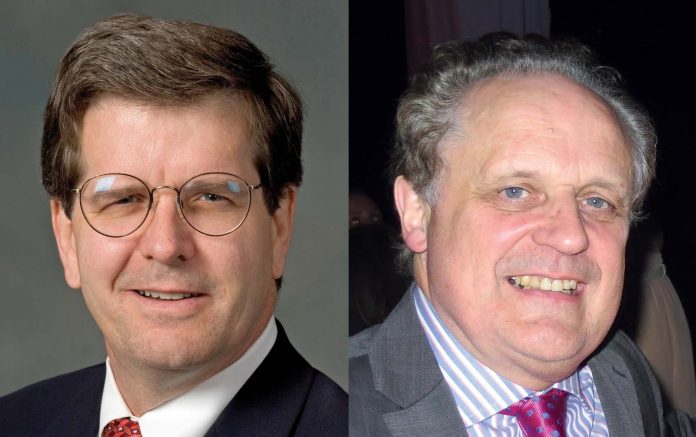By James L. Mulshine, MD, and John K. Field, PhD, FRCPath
Posted: March 1, 2019
The IASLC is supporting a new early thoracic CT image archive to encourage both quality measures and research for early lung cancer detection and management. This effort, the IASLC’s Early Lung Imaging Confederation (ELIC), is planned to have global reach by using a hub and spoke architecture (Fig. 1). A centerpiece of this is the development of ELIC as an innovative, international collaborative data environment to store, analyze, and aggregate CT images and associated de-identified clinical information. To enable quantitative analysis, the stored collection will consist of high-quality digital imaging and communications in medicine files of CT images, associated with a harmonized, minimal dataset of core clinical metadata. Analyses will be done at local/regional centers (spokes), and results will be assembled in a cloud-based IASLC hub. This environment is designed to allow local review of images without moving donated CT images outside of national borders to address the evolving international data-sharing requirements. The ELIC hub and spoke system will permit analysis of CT images and associated data in a highly secure environment, without any requirement to reveal data itself (i.e., privacy protecting). No identifiable data will ever leave sources under governance of the local primary investigator control.
This cloud-based, open research environment will provide a global collaborative resource to accelerate progress by enabling precise, robust evaluation of CT images for the earliest evidence of emerging lung cancers and will potentially increase the frequency of curative screening management. ELIC may also establish a framework to conduct pilot clinical trials and will complement established successful IASLC efforts with lung cancer staging and pathology.
The preliminary feasibility test of this approach will be an effort to connect six of the world’s largest existing lung cancer screening registries to allow for rapid image analysis. The goal of this project will be to provide a global resource to facilitate setup and deployment of quantitative imaging tools that will enable rapid implementation of screening by new global lung cancer screening groups. To enhance the developmental utility of ELIC, CT images accrued into the ELIC archive will be of sufficient quality so that the collection of data obtained from global populations can support meaningful quantitative research. All image acquisition will be accomplished with new quality-conformance process developed by the Quantitative Imaging Biomarker Alliance.
A fundamental goal of ELIC is to support the development of deep learning methods or artificial intelligence approaches to detect early lung cancer and other diseases using thoracic CT images, as well as to measure responsiveness of those conditions to therapeutic interventions. Implementing low-dose CT screening could be greatly facilitated by the use of validated deep learning algorithms and the development of other types of reliable soft ware tools for early detection of lung cancer and other thoracic diseases.
Staying Current
The IASLC has focused on recent progress in lung cancer screening outside of ELIC. In addition to bringing the NELSON trial results to the podium at the World Conference on Lung Cancer, the IASLC hosted the Sixth Strategic Screening Advisory Committee Workshop, which was jointly chaired by the authors of this article. The full-day forum brought together many of the pioneers and leaders in the field of lung cancer screening for a deeper dive into topical screening initiatives around the world. Updates from lung cancer screening trials in nine countries and discussion of the cost-effectiveness of screening for lung cancer were major topics of interest. In addition, efforts to pair screening with smoking cessation were highlighted.
Information was also presented at WCLC regarding practical issues including implementation of screening programs, as well as the next steps for screening, such as how to combine it with early-stage treatments including surgical management. These efforts are of great importance as the global focus on screening-related topics advances. Visit library.iaslc.org to review pivotal screening sessions, such as Forefront Advances in Lung Cancer Screening. ✦
About the Authors: Prof. Mulshine is a professor at at Rush University and chair of the IASLC Early Detection and Screening Committee. Prof. Field has a personal clinical chair in Molecular Oncology at the University of Liverpool, UK.










